Many marketers think generating a ton of traffic to their website is the end-all-be-all of online marketing.
It isn’t. What’s far more important is getting your target market right.
Your target market is the people you want to buy your product or service. Some are existing customers, while others may never have heard of you.
Isn’t that just the same as a demographic?
Not quite.
Demographics are actually subsets of a target market.
For example, a car insurance company’s target market could be “all car owners.” But their latest marketing campaign could focus on one specific demographic within that market, such as young drivers.
Why You Need to Identify Your Target Market for Paid Ad Campaigns
An ad campaign is only as strong as its audience targeting.
To continue the car insurance example, I wouldn’t use messaging and imagery aimed at young drivers in a social campaign targeted at older audiences and I wouldn’t bid on keywords like “car insurance for young drivers” if my target market was older motorists.
Those are obvious examples; you don’t need to be a professional marketer to avoid falling into those traps.
But getting your targeting even slightly off can have expensive consequences.
Consider this: the average cost per click (CPC) of a Google search ad is $2.69, although it’s far higher in some industries.
If you’re in the legal sector, generating just 100 clicks would cost you an average of $675. That’s a lot of money to spend on the wrong audience.
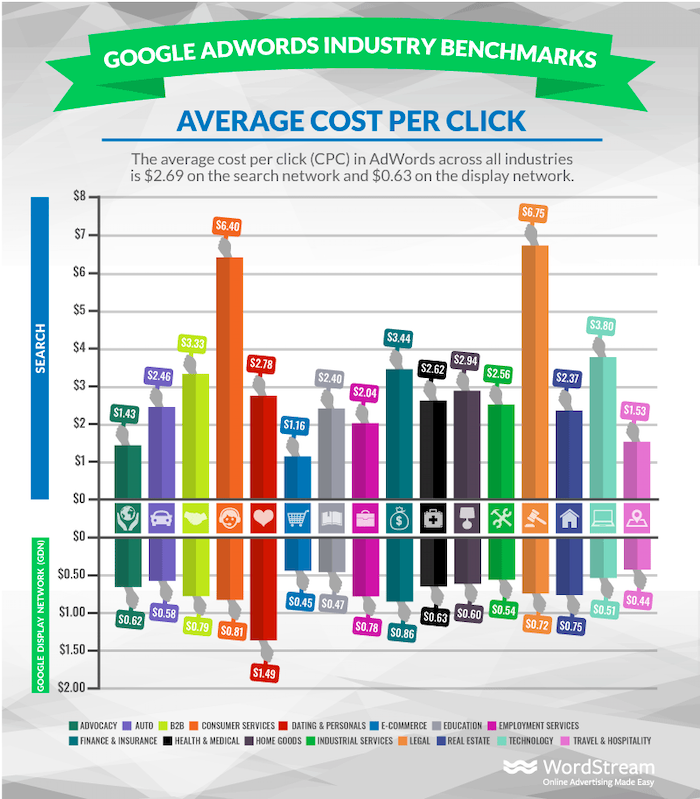
CPCs are slightly cheaper on Facebook, but businesses in the finance and insurance space still pay an average of $377 for 100 clicks.
You can’t afford to throw that sort of money away by reaching the wrong target market.
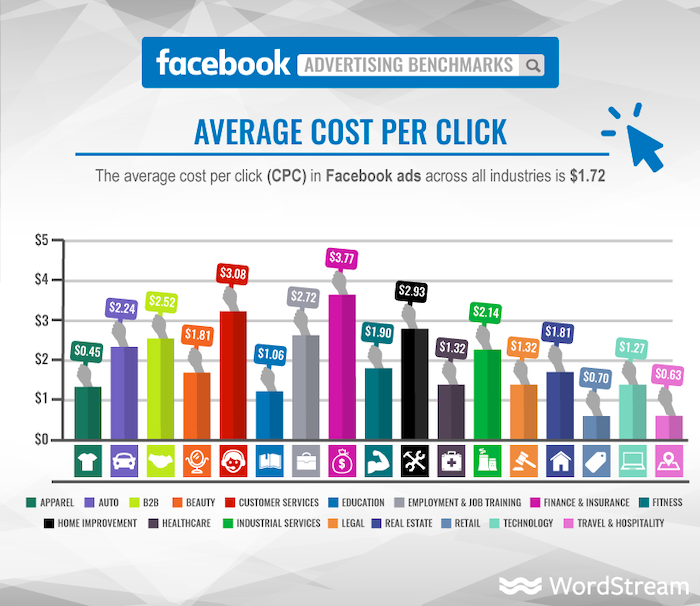
But there’s more to it than that.
Google and Facebook (and all the other big social sites) use what’s known as a “quality score” or “relevance score.” When you run paid campaigns, you’re given a score from 1-10 based on your ad’s relevance to the target audience.
Here’s the important part: your quality score directly impacts where your ad ranks, and how much you pay to rank there.
If you bid the same as your competitor, but you have a higher quality score, your ads are more likely to reach your audience. In fact, if your quality score is much higher than theirs, you can outrank them while spending less.
Target Audience for Organic vs. Paid Ads
There’s no such thing as an “organic audience” or a “paid audience.” We’re all the same; our activity just varies depending on our place in the buyer cycle.
What do I mean by this?
To explain, I’m going to use search as an example. As a rule, people are much less likely to click on paid than organic listings. In fact, just under half of Google searches end in an organic click, compared to about one in 22 that results in a paid click.
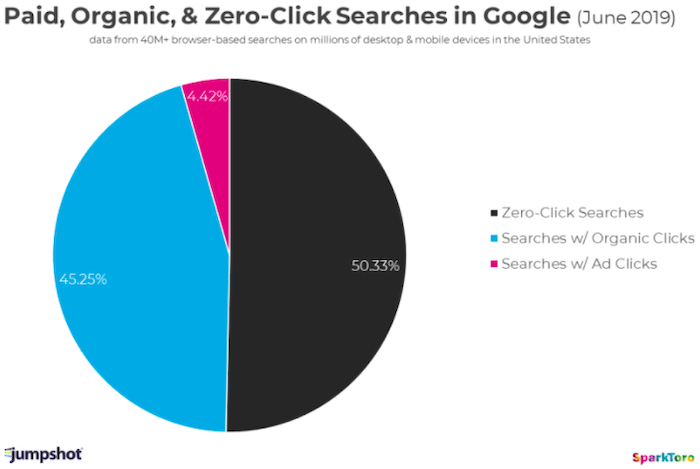
But that doesn’t mean paid search is a waste of money because paid listings beat organic listings by a ratio of almost 2:1 for keywords with high commercial intent.
That means paid clickers are generally more qualified; they’ve done their research, they know they need a certain product or solution, and they’re ready to buy.
How to Find Your Ideal Target Market for PPC and Paid Social Campaigns
If you offer a niche product or service (like car insurance for young drivers), your target market is pretty clear.
Things get more complex if you have an incredibly diverse customer base, or a mass-market product or service. But it’s still possible to drill down to a target market for your PPC and paid social activity.
1. Search for Commonalities in Your Current Customer Base
Unless you’re a brand new business, you’ll already have a customer base. Those customers hold the key to understanding your ideal target market.
They likely share some key behaviors, characteristics, or interests, even if they’re super diverse on the face of things. It’s doubtful the only thing binding them together is a shared love of your brand.
Consider the following data points:
- Age: Aim for a broad age range or generation. Are they Baby Boomers or Gen X? Millennials or Zoomers?
- Stage of life: Are they, college students? New parents, or parents of older children? Middle-aged or retired?
- Location: Where are they based? Are they all in the same time zone?
- Buying power: How affluent are they? Would they see your product or service as a big-ticket item?
- Interests: What do they do when they’re not buying your product? Do they have a favorite sports team, music artist, or TV show?
- Pain points: What reasons do they have for seeking out a product like yours?
None of these factors will tell you everything about your target market, and you shouldn’t use a single characteristic, like age or location, to define how you speak to them. But in combination, these characteristics will help you target more effectively.
2. Understand Why People Buy From You
You know who your existing customers are; now you need to figure out why they’re your customers in the first place.
People buy for any number of reasons, but some of the most common include:
- To fill a basic need: The bottom tier of Maslow’s Hierarchy of Needs, including things like food and shelter.
- Out of convenience: You have an immediate need (say, you’re thirsty), so you take the fastest or simplest route to purchase (such as heading to the nearest coffee shop.)
- As a replacement or upgrade: Maybe your old suit doesn’t fit so well anymore, or perhaps it’s finally time to upgrade to a smart TV.
- Because it’s aspirational: Buying a slick new watch or an expensive car might raise your standing in other people’s eyes.
- Due to peer pressure: Your friends want you to buy something, so you do.
- To indulge yourself: Sure, you don’t need this thing, but you deserve it (or at least, that’s what you tell yourself.)
- Because it’s the latest trend or innovation: Just look at the queues when a new iPhone launches.
- It offers great value: Maybe a product you’ve been eyeing for a long time is on sale, or maybe it’s something you’ve never considered before but the deal is too good to ignore.
Sometimes, a purchase will fall into multiple categories. A new car could be aspirational, a replacement for an older model, and much more efficient than your old gas guzzler.
Try to understand the most significant reason people choose your product. To find out, run a customer survey, asking things like:
- Why were you looking for this product in the first place?
- Why did you buy from us, rather than a rival?
- What other factors played a part in your decision-making process?
- What would have stopped you from buying our product?
3. Follow the Target Market Data
Want to know the biggest reason startups fail?
It’s not because they run out of money or price their product too high. It’s because there’s no market need for their product.
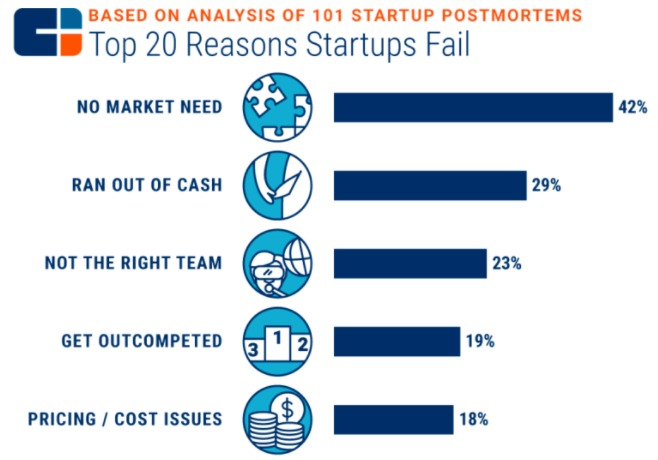
This is what happens when the people behind a business are so blinded they don’t stop to figure out if anyone needs what they’re selling. They run off assumptions rather than data.
Don’t fall into the same trap. Never assume you know your target market and understand what motivates them to purchase if you haven’t taken the time to ask them. When they respond, use those answers to guide your marketing, rather than following gut instinct.
How to Incorporate Your Target Market Into Your Paid Ads
Once you understand your target market, you can use those learnings to inform your paid ad strategy. Here’s how to do it.
1. Segment Your Target Market
Chances are, your research has identified multiple subsets within your overarching target market. You could reach all of those demographics at once with a single, super generic campaign.
However, you’ll likely see much stronger results from segmenting your audience and targeting each segment with different ads.
McDonald’s is a fantastic example. Look how the fast-food giant defines its target market:

It’s trying to reach literally everyone! While most of its campaigns have a broad reach, it doesn’t always target all of us with the same ads.
As you’d expect from a huge multinational corporation, its targeting is extremely sophisticated and subtle. Let’s look at two McDonald’s ads, both aimed at a young target market, and both broadly related to issues like activism and social justice.

Almost half the audience for this ad was people aged 18-24. It’s cool, inclusive, and directs users toward YouTube, a platform with exceptionally high reach among younger audiences.
Here’s another example:

The audience for this ad skewed older, with 50% of the audience aged 25-34. It wasn’t even shown to people in the 18-24 age range, which likely reflects the more serious, corporate-sounding tone of voice.
2. Hone in on Your Target Market Through Demographic Targeting
Platforms like Facebook and LinkedIn offer many demographic options to reach your ideal target market through social ads. Those options start at the top level, incorporating things like:
- location
- age
- gender
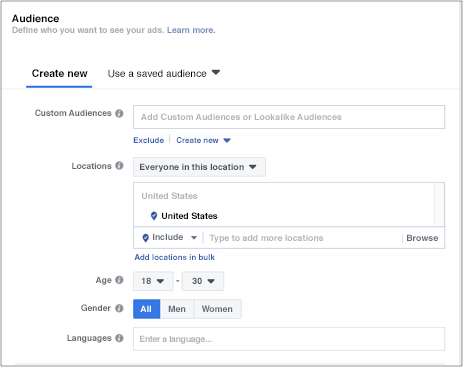
However, it’s possible to get much more granular.
By using Facebook Audience Insights, you can play around with all those options to understand your target market’s size and makeup. For instance, here’s a top-level breakdown for people in the US interested in digital marketing or digital advertising:
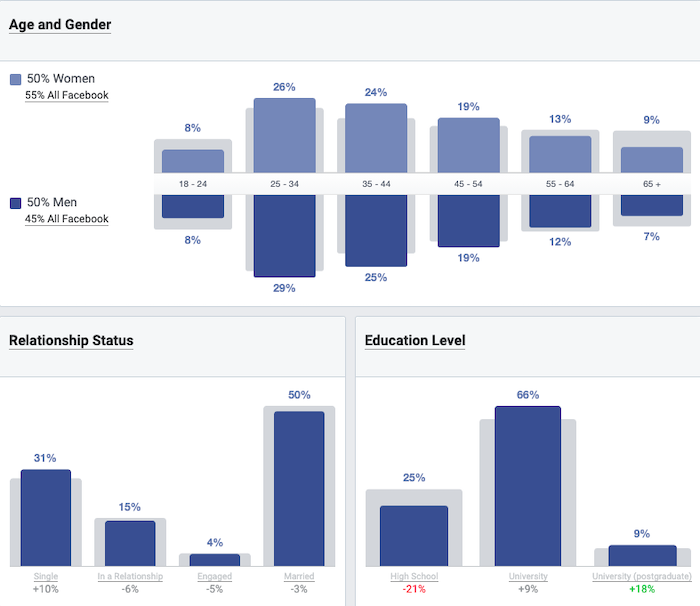
That’s a useful starting point for understanding this target market, but it’s possible to dig much deeper. If I tighten my search from all people interested in digital advertising and marketing to just men with those interests who are aged 25-34 and live in California, I can see they’re:
- almost certainly university-educated
- most likely to work in sales or production
- interested in Gary Vaynerchuk and Tim Ferriss
- almost twice as likely to click ads as the average Facebook user
The more you already know about your audience, the more you can find out about them. It’s a virtuous circle.
3. Exclude Specific Audiences From Paid Search Campaigns
You’ve done your research, segmented your target market into smaller subsets, and built unique paid search campaigns with dedicated landing pages for each audience.
But there’s a problem.
People are clicking ads aimed at different audiences, which means they’re shown landing pages that aren’t relevant to them. Rather than buying, they’re clicking off and heading straight to your competitors.
Fortunately, you can eradicate this issue (and others) with audience exclusions. They allow you to:
- stop targeting existing customers
- exclude people who are better suited to a different campaign
- remove website visitors who’ve already performed the desired action
To add audience exclusions to your Google Ads campaigns, follow these steps:
- Sign in to your Google Ads account.
- Click “Audiences.”
- Click “Exclusions.”
- Click the blue “plus” icon.
- Select “Campaign” or “Ad group” from the drop-down menu.
- Click the pencil icon and select the relevant campaign or ad group.
- Use “Search” and “Browse” to find the audiences you want to exclude.
- Click “Save.”
Conclusion
As with any element of marketing strategy, identifying your ideal target market takes time. If you’re in a hurry to launch your paid campaigns and start generating results, it’s a step you might want to skip.
But I guarantee it’s worth investing the energy upfront. You’ll reach more of the right people. You’re more likely to convert leads and generate more sales. And you’ll save money by cutting down on inefficient campaigns.
What tactics have you used to define your ideal target market?





0 Comments